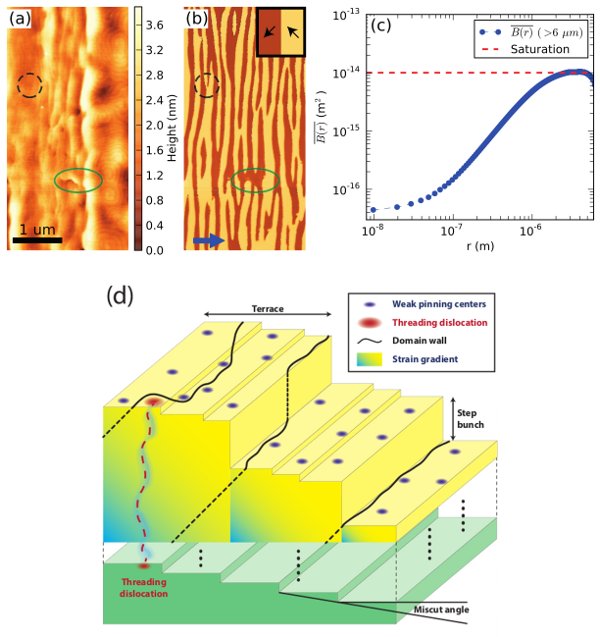Exploring complex domain walls in multiferroic systems
In materials with coupled order parameters, such as magnetoelectric multiferroic systems, domain walls are expected to present unusual behavior, including a chiral nature, and possibly enhancement of the order parameters. In multiferroic BiFeO3, such electromagnetic coupling has been predicted to allow the appearance of ferromagnetism at ferroelectric domain walls, although the domain themselves are not ferromagnetic. In addition, open questions remain as to the static and dynamic nature of domain walls in the system, where the much wider antiferromagnetic Néel walls couple to narrower, more Ising-like ferroelectric domain walls. We have shown that the intrinsic ferroelectric domain periodicity in BiFeO3 is similar to that of magnetic materials, and significantly greater than that observed in simpler, purely ferroelectric materials like BaTiO3 and PbTiO3. In addition, our studies of intrinsic 71° domain walls show significantly higher roughness exponents, and localised breakdown of mono-affinity related to interactions with strong individual defects, and between neighboring domain walls.

Simultaneous obtained (a) topography and (b) lateral phase images of step bunching and intrinsic 71° stripe domains. The blue arrow indicates cantilever orientation. The inset in (b) indicates the in-plane polarization orientation. (c) Average roughness B(r) for domain walls > 6μm, with saturation of relative displacements at ~100nm (dashed (red) line). (d) Schematic diagram of different possible pinning centres in a BiFeO3 film with step bunches (larger steps) and terraces with unit cell steps (smaller steps). 71° domain walls are drawn as solid (black) lines on top of the film and dashed (black) lines into the film. The small (dark blue) spots and the larger (dark red) spots indicate weak pinning centres and threading dislocations, respectively. The colour gradient indicates the strain gradient introduces by the substrate’s vicinality, whereas the blue (dark) and the yellow (bright) areas indicate the strained and relaxed BiFeO3 regions.